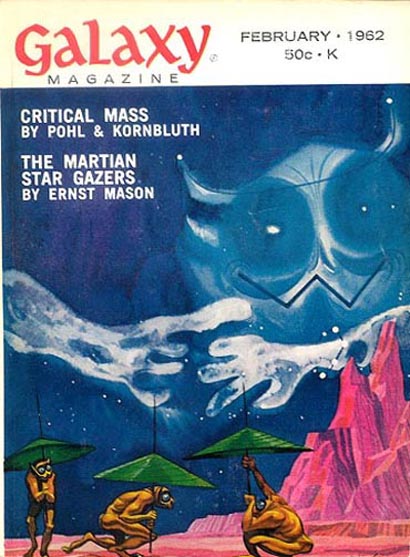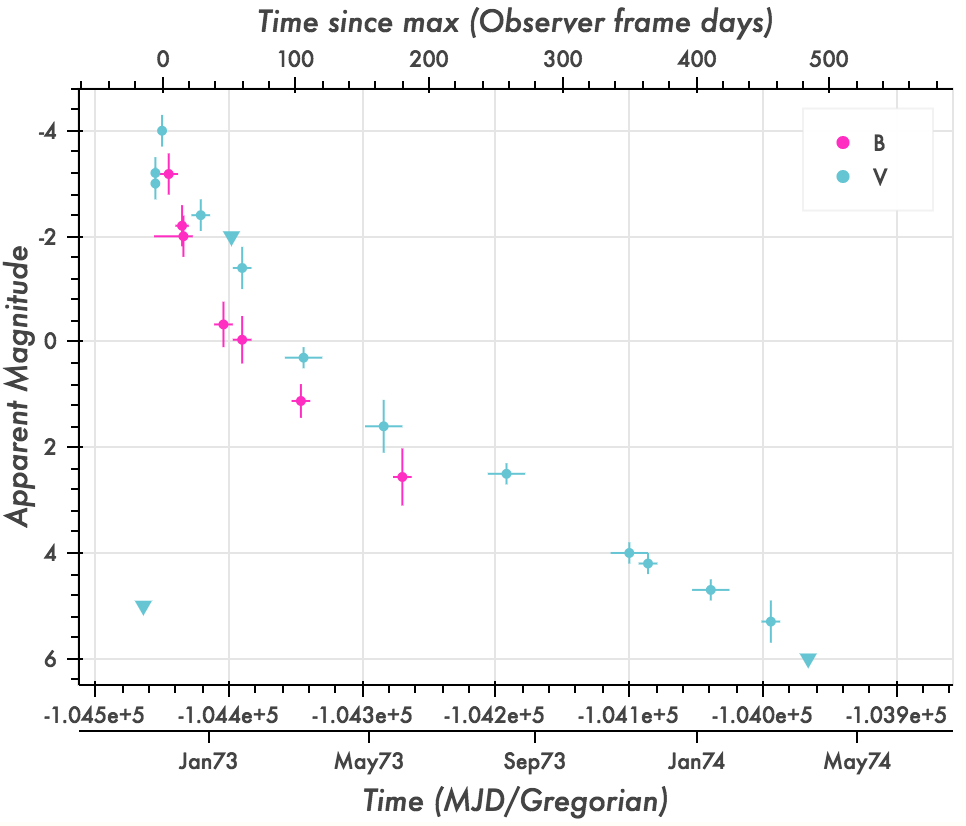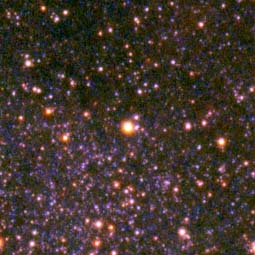|
The Martian Star-Gazers
''The Martian Star-Gazers'' is a humorous parody article first published in the American magazine ''Galaxy Science Fiction'' in February 1962. Written by Frederik Pohl, it appeared under the pseudonym "Ernst Mason". The article is written from the point of view of an anthropologist studying the extinct culture of Mars. Among the artifacts discovered by explorers from Earth were many items that resembled umbrellas. The writer explains that this was due to the Martian interpretation of the Milky Way and related constellations of their southern sky, which was visible from the places where their civilization arose. They came to believe that one constellation near their South Celestial pole was a malevolent being they called "Old Grabby" and that the visible portion of the galaxy represented his hands and arms. The Magellanic Clouds looked like eyes and were known as "The Peepers". The bright stars Canopus and Achernar represented horns on Old Grabby's head. The Crux, Southern ... [...More Info...] [...Related Items...] OR: [Wikipedia] [Google] [Baidu] |
Frederik Pohl
Frederik George Pohl Jr. (; November 26, 1919 – September 2, 2013) was an American science-fiction writer, editor, and fan, with a career spanning nearly 75 years—from his first published work, the 1937 poem "Elegy to a Dead Satellite: Luna", to the 2011 novel ''All the Lives He Led''. From about 1959 until 1969, Pohl edited '' Galaxy'' and its sister magazine '' If''; the latter won three successive annual Hugo Awards as the year's best professional magazine. His 1977 novel '' Gateway'' won four "year's best novel" awards: the Hugo voted by convention participants, the Locus voted by magazine subscribers, the Nebula voted by American science-fiction writers, and the juried academic John W. Campbell Memorial Award. He won the Campbell Memorial Award again for the 1984 collection of novellas ''The Years of the City'', one of two repeat winners during the first 40 years. For his 1979 novel ''Jem'', Pohl won a U.S. National Book Award in the one-year category Science ... [...More Info...] [...Related Items...] OR: [Wikipedia] [Google] [Baidu] |
Achernar
Achernar is the brightest star in the constellation of Eridanus, and the ninth-brightest in the night sky. It has the Bayer designation Alpha Eridani, which is Latinized from α Eridani and abbreviated Alpha Eri or α Eri. The name Achernar applies to the primary component of a binary system. The two components are designated Alpha Eridani A (the primary) and B (the secondary), with the latter known informally as Achernar B. As determined by the ''Hipparcos'' astrometry satellite, this system is located at a distance of approximately from the Sun. Of the ten apparent brightest stars in the night-time sky, Alpha Eridani is the hottest and bluest in color, due to Achernar being of spectral type B. Achernar has an unusually rapid rotational velocity, causing it to become oblate in shape. The secondary is smaller, of spectral type A, and orbits Achernar at a distance of . Nomenclature ''α Eridani'' ( Latinised to ''Alpha Eridani'') is the system's Bayer designation. ... [...More Info...] [...Related Items...] OR: [Wikipedia] [Google] [Baidu] |
1962 Short Stories
Year 196 ( CXCVI) was a leap year starting on Thursday (link will display the full calendar) of the Julian calendar. At the time, it was known as the Year of the Consulship of Dexter and Messalla (or, less frequently, year 949 '' Ab urbe condita''). The denomination 196 for this year has been used since the early medieval period, when the Anno Domini calendar era became the prevalent method in Europe for naming years. Events By place Roman Empire * Emperor Septimius Severus attempts to assassinate Clodius Albinus but fails, causing Albinus to retaliate militarily. * Emperor Septimius Severus captures and sacks Byzantium; the city is rebuilt and regains its previous prosperity. * In order to assure the support of the Roman legion in Germany on his march to Rome, Clodius Albinus is declared Augustus by his army while crossing Gaul. * Hadrian's wall in Britain is partially destroyed. China * First year of the '' Jian'an era of the Chinese Han Dynasty. * Emperor Xian ... [...More Info...] [...Related Items...] OR: [Wikipedia] [Google] [Baidu] |
Short Stories By Frederik Pohl
Short may refer to: Places * Short (crater), a lunar impact crater on the near side of the Moon * Short, Mississippi, an unincorporated community * Short, Oklahoma, a census-designated place People * Short (surname) * List of people known as the Short Arts, entertainment, and media * Short film, a cinema format (also called film short or short subject) * Short story, prose generally readable in one sitting * ''The Short-Timers'', a 1979 semi-autobiographical novel by Gustav Hasford, about military short-timers in Vietnam Brands and enterprises * Short Brothers, a British aerospace company * Short Brothers of Sunderland, former English shipbuilder Computing and technology * Short circuit, an accidental connection between two nodes of an electrical circuit * Short integer, a computer datatype Finance * Short (finance), stock-trading position * Short snorter, a banknote signed by fellow travelers, common during World War II Foodstuffs * Short pastry, one which is rich in butt ... [...More Info...] [...Related Items...] OR: [Wikipedia] [Google] [Baidu] |
Science Fiction Short Stories
Science is a systematic endeavor that builds and organizes knowledge in the form of testable explanations and predictions about the universe. Science may be as old as the human species, and some of the earliest archeological evidence for scientific reasoning is tens of thousands of years old. The earliest written records in the history of science come from Ancient Egypt and Mesopotamia in around 3000 to 1200 BCE. Their contributions to mathematics, astronomy, and medicine entered and shaped Greek natural philosophy of classical antiquity, whereby formal attempts were made to provide explanations of events in the physical world based on natural causes. After the fall of the Western Roman Empire, knowledge of Greek conceptions of the world deteriorated in Western Europe during the early centuries (400 to 1000 CE) of the Middle Ages, but was preserved in the Muslim world during the Islamic Golden Age and later by the efforts of Byzantine Greek scholars who brought Greek man ... [...More Info...] [...Related Items...] OR: [Wikipedia] [Google] [Baidu] |
SN 1572
SN 1572 ('' Tycho's Supernova'', ''Tycho's Nova''), or B Cassiopeiae (B Cas), was a supernova of Type Ia in the constellation Cassiopeia, one of eight supernovae visible to the naked eye in historical records. It appeared in early November 1572 and was independently discovered by many individuals. Its supernova remnant has been observed optically but was first detected at radio wavelengths; it is often known as 3C 10, a radio-source designation, although increasingly as Tycho's supernova remnant. Historic description The appearance of the Milky Way supernova of 1572 belongs among the most important observation events in the history of astronomy. The appearance of the "new star" helped to revise ancient models of the heavens and to speed on a revolution in astronomy that began with the realisation of the need to produce better astrometric star catalogues (and thus the need for more precise astronomical observing instruments). It also challenged the Aristotelian dogma of the ... [...More Info...] [...Related Items...] OR: [Wikipedia] [Google] [Baidu] |
Orion Nebula
The Orion Nebula (also known as Messier 42, M42, or NGC 1976) is a diffuse nebula situated in the Milky Way, being south of Orion's Belt in the constellation of Orion. It is one of the brightest nebulae and is visible to the naked eye in the night sky with apparent magnitude 4.0. It is away and is the closest region of massive star formation to Earth. The M42 nebula is estimated to be 24 light-years across (so its apparent size from Earth is approximately 1 degree). It has a mass of about 2,000 times that of the Sun. Older texts frequently refer to the Orion Nebula as the Great Nebula in Orion or the Great Orion Nebula. The Orion Nebula is one of the most scrutinized and photographed objects in the night sky and is among the most intensely studied celestial features.Press release,Astronomers Spot The Great Orion Nebula's Successor", Harvard-Smithsonian Center for Astrophysics, 2006. The nebula has revealed much about the process of how stars and planetary systems are form ... [...More Info...] [...Related Items...] OR: [Wikipedia] [Google] [Baidu] |
Delta Cephei
Delta Cephei (δ Cep, δ Cephei) is the Bayer designation for a quadruple star system located approximately 887 light-years away in the northern constellation of Cepheus, the King. At this distance, the visual magnitude of the star is diminished by 0.23 as a result of extinction caused by gas and dust along the line of sight. It is the prototype of the Cepheid variable stars that undergo periodic changes in luminosity. Discovery Delta Cephei was discovered to be variable by John Goodricke during 1784. He describes his first observation on October 19, 1784, followed by a regular series of observations most nights until December 28. Further observations were made during the first half of 1785, the variability was described in a letter dated June 28, 1785, and formally published on January 1, 1786. This was the second variable star of this type, with eta Aquilae being discovered just a few weeks earlier, on September 10, 1784. Properties As well as being the prototype of ... [...More Info...] [...Related Items...] OR: [Wikipedia] [Google] [Baidu] |
Cassiopeia (constellation)
Cassiopeia () is a constellation in the northern sky named after the vain queen Cassiopeia, mother of Andromeda, in Greek mythology, who boasted about her unrivaled beauty. Cassiopeia was one of the 48 constellations listed by the 2nd-century Greek astronomer Ptolemy, and it remains one of the 88 modern constellations today. It is easily recognizable due to its distinctive ' W' shape, formed by five bright stars. Cassiopeia is located in the northern sky and from latitudes above 34°N it is visible year-round. In the (sub)tropics it can be seen at its clearest from September to early November, and at low southern, tropical, latitudes of less than 25°S it can be seen, seasonally, low in the North. At magnitude 2.2, Alpha Cassiopeiae, or Schedar, is generally the brightest star in Cassiopeia, though it is occasionally outshone by the variable Gamma Cassiopeiae, which has reached magnitude 1.6. The constellation hosts some of the most luminous stars known, including the yello ... [...More Info...] [...Related Items...] OR: [Wikipedia] [Google] [Baidu] |
Crux
Crux () is a constellation of the southern sky that is centred on four bright stars in a cross-shaped asterism commonly known as the Southern Cross. It lies on the southern end of the Milky Way's visible band. The name ''Crux'' is Latin for cross. Even though it is the smallest of all 88 modern constellations, Crux is among the most easily distinguished as its four main stars each have an apparent visual magnitude brighter than +2.8. It has attained a high level of cultural significance in many Southern Hemisphere states and nations. Blue-white α Crucis (Acrux) is the most southerly member of the constellation and, at magnitude 0.8, the brightest. The three other stars of the cross appear clockwise and in order of lessening magnitude: β Crucis (Mimosa), γ Crucis (Gacrux), and δ Crucis (Imai). ε Crucis (Ginan) also lies within the cross asterism. Many of these brighter stars are members of the Scorpius–Centaurus association, a large but loose group of hot blue-whit ... [...More Info...] [...Related Items...] OR: [Wikipedia] [Google] [Baidu] |
Canopus
Canopus is the brightest star in the southern constellation of Carina (constellation), Carina and the list of brightest stars, second-brightest star in the night sky. It is also Bayer designation, designated α Carinae, which is Latinisation of names, Latinised to Alpha Carinae. With a visual apparent magnitude of −0.74, it is outshone only by Sirius. Located around from the Sun, Canopus is a bright giant of spectral type A9, so it is essentially white when seen with the naked eye. It has a luminosity over 10,000 times the luminosity of the Sun, is eight times as mass of the Sun, massive, and has expanded to 71 times the Sun's radius. Its enlarged photosphere has an effective temperature of around . Canopus is undergoing stellar core, core helium fusion, helium burning and is currently in the so-called blue loop phase of its stellar evolution, evolution, having already passed through the red-giant branch after exhausting the hydrogen in its core. Canopus is ... [...More Info...] [...Related Items...] OR: [Wikipedia] [Google] [Baidu] |
English Language
English is a West Germanic language of the Indo-European language family, with its earliest forms spoken by the inhabitants of early medieval England. It is named after the Angles, one of the ancient Germanic peoples that migrated to the island of Great Britain. Existing on a dialect continuum with Scots, and then closest related to the Low Saxon and Frisian languages, English is genealogically West Germanic. However, its vocabulary is also distinctively influenced by dialects of France (about 29% of Modern English words) and Latin (also about 29%), plus some grammar and a small amount of core vocabulary influenced by Old Norse (a North Germanic language). Speakers of English are called Anglophones. The earliest forms of English, collectively known as Old English, evolved from a group of West Germanic (Ingvaeonic) dialects brought to Great Britain by Anglo-Saxon settlers in the 5th century and further mutated by Norse-speaking Viking settlers starting in the 8th and 9th ... [...More Info...] [...Related Items...] OR: [Wikipedia] [Google] [Baidu] |









